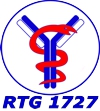MD TP32: Novel treatment strategies for epidermolysis bullosa acquisita: Identification of therapeutic substances targeting immune complex-induced neutrophil adhesion
Epidermolysis bullosa acquisita (EBA) is an autoimmune skin blistering disease mediated by autoantibody against type VII collagen (1). Studies using experimental models of EBA have shown that neutrophils are the major effector cells executing the autoantibody-induced tissue damage and neutrophil elastase and reactive oxygen species (ROS) are essential players in this process (2-4). Very recently, we investigate the role of the immune complex (IC)-induced neutrophil adhesion in the tissue damage in experimental EBA. Our results show that anti-CD18 blocking antibody can specifically inhibit the IC-induced neutrophil adhesion but not affect the IC-induced production of ROS and elastase. Furthermore, using anti-CD18 blocking antibody prevents drastically the anti-COL7 IgG induced tissue damage in both ex vivo and in vivo model of EBA, suggesting that IC-induced neutrophil adhesion is an essential step for autoantibody mediated tissue damage. Finally, the FRET report assay showed that the IC-induced neutrophil adhesion is required for elastase to escape from the inhibition of alpha-1-proteinase inhibitor. Based on these observations, we propose a hypothesis how anti-COL7 IgG mediate tissue damage, where IC-induced neutrophil adhesion create a closed space allowing the proteinase and ROS to execute their tissue-damaging effect (Figure 1).
Given an essential role of IC-induced neutrophil adhesion in the tissue damage process of EBA, it provide a chance to treat the disease by specifically targeting neutrophil adhesion without affecting other neutrophil functions. Therefore, in this project we aim to screen and identify therapeutic substance specifically targeting IC-induced neutrophil adhesion. The project contains three working packages. First, using the well established high-throughput system for quantifying the neutrophil adhesion process, we will screen the Prestwick Chemical Library and the Natural Product Library which contains more than 1,400 components to search for substances being able to inhibit the IC-induced neutrophil adhesion. Secondly, the substances identified in the first step will be further evaluated in the aspects of dosage, specificity and toxicity. Finally, the qualified candidate substances from the second step will be evaluated for their therapeutic efficacy in the ex vivo model of EBA. The project will be finished in 12 months. The time schedule of the proposed working programs is shown in Figure 2. The screen of the two library to search for candidate components will be finished in the first four months. The evaluation of the specificity, toxicity and dosage of the candidate components will be finished in the 5th and 6th months. Finally, the evaluation of the therapeutic efficacy of the candidate components using the ex vivo model of EBA will be finished in the last six months.
Reference
1: Woodley DT, Burgeson RE, Lunstrum G, Bruckner-Tuderman L, Reese MJ, Briggaman RA. Epidermolysis bullosa acquisita antigen is the globular carboxyl terminus of type VII procollagen. J Clin Invest 1988 Mar;81(3):683-7.
2. Chiriac MT, Roesler J, Sindrilaru A, Scharffetter-Kochanek K, Zillikens D, Sitaru C. NADPH oxidase is required for neutrophil-dependent autoantibody-induced tissue damage. J Pathol 2007 May;212(1):56-65.
3. Shimanovich I, Mihai S, Oostingh GJ, Ilenchuk TT, Brocker EB, Opdenakker G, et al. Granulocyte-derived elastase and gelatinase B are required for dermal-epidermal separation induced by autoantibodies from patients with epidermolysis bullosa acquisita and bullous pemphigoid. J Pathol 2004 Dec;204(5):519-27.
4. Sitaru C, Mihai S, Otto C, Chiriac MT, Hausser I, Dotterweich B, et al. Induction of dermal-epidermal separation in mice by passive transfer of antibodies specific to type VII collagen. J Clin Invest 2005 Apr;115(4):870-8.

- Projects
- Projects
- Associated projects
- MD projects
- Associated MD projects
- Concluded projects
- Concluded TP
- Concluded Ass.TP
- Concluded MD TP
- MD TP1 - Ig Glycolysation
- MD TP2 - Immunoprivilege
- MD TP3 - ANA antibodies
- MD TP4 - Autoantibody prevalence
- MD TP5 - Treatment of EBA
- MD TP6 - Autoantibody-induced tissue injury
- MD TP7 - Neutrophil signalling
- MD TP7b - IgG-IC-induced signalling
- MD TP8 - The role of IL-33 and its receptor ST2
- MD TP9 - Detection of antigen-specific B cells
- MD TP9b - Detection of antigen-specific B cells in BP
- MD TP10 - Old drugs to block T cells
- MD TP10b - Combination of T cell inhibitory compounds
- MD TP10c - T cell inhibitory compounds (in vivo)
- MD TP11 - Identification of "genetic biomarkers"
- MD TP12 - Combinations of B cell modulatory compounds
- MD TP13 - TREM1 in cutaneous inflammation
- MD TP14 - Signaling in PV
- MD TP15 - Autoantibodies in relatives
- MD TP16 - Drug-induced pemphigoid
- MD TP17 - Keratinocyte lipid mediators
- MD TP18 - Neutrophils + IL-17A-Inhibition
- MD TP19 - C5aR-Inhibition
- MD TP20 - IgG-Subclasses
- MD TP21 - NF-kB in EBA
- MD TP22 - Biochip Mosaics in AIBD
- MD TP23 - Diagnostic Techniques on AIBD
- MD TP24 - Anti-stimulatory effects on Neutrophil-signaling
- MD TP25 - Phage library on systemic scleroderma
- MD TP26 - New EBA-scoring sytem
- MD TP27 - Neutrophil signaling-pathway inhibition
- MD TP28 - Inhibition of Keratinocytes
- MD TP29 - Monoclonal antibodies in EBA
- MD TP30 - Enhancing vaccinations under Immunosuppression
- MD TP31 - Non-desmoglein autoantibodies in PV
- MD TP32 - Neutrophil adhesion
- MD TP33 - MicroRNA-21 in BP
- MD TP34 - PI3K-subunits in EBA
- MD TP35 - Signaling cascade inhibition in EBA
- MD TP36 - Signaling cascades in keratinocytes
- MD TP37 - AT1R-antibodies
- MD TP38 - Cell migration regulation
- MD TP39 - mACh-Receptors in systemic sclerosis
- MD TP40 - Hair and EBA
- MD TP41 - CMV-specific T cells
- MD TP42 - Necroptosis in GPA
- MD TP43 - Neutrophils and NETs
- MD TP44 - Mitochondrial genome in AIBD
- MD TP45 - Target antigens in pemphgoid diseases
- MD TP46 - Alpha-adrenoceptors in Raynaud´s phenomenon
- MD TP47 - T cell-receptor-sequences in autoimmune skin diseases
- MD TP48 - Epitope specificity and glycolization
- MD TP49 - Inhibition of keratinocyte-dissociation
- MD TP50 - Transcriptome profile of endothelial cells induced by autoantibodies targeting AT1R/ETAR in systemic sclerosis
- MD TP52 - Expression of B4GALT1 and ST6GAL1 ....
- MD TP54 - Reactivity of serum antibodies ....
- MD TP55 - Identification of potential therapeutics .....
- MD TP56 - Validation of the inhibition of different signalling pathways ...
- MD TP57 - Inhibition of IFN-γ as therapy for epidermolysis bullosa acquisita
- MD TP58 - Characterization of immunoglobulin G subclass distribution ...
- MD TP59 - Development of an experimental pemphigus vulgaris model in adult mice
- MD TP60 - Interactions between GPCR and anti-GPCR IgG autoantibodies...
- MD TP61 - Glycosyltransferases B4GALT1 and ST6GAL1 in...
- MD TP62 - Sensitivity of diagnostic test systems in dermatitis herpetiformis Duhring
- Concluded Ass. MD TP
Principal investigator(s)
Mentors
PhD student

Kai Yang







